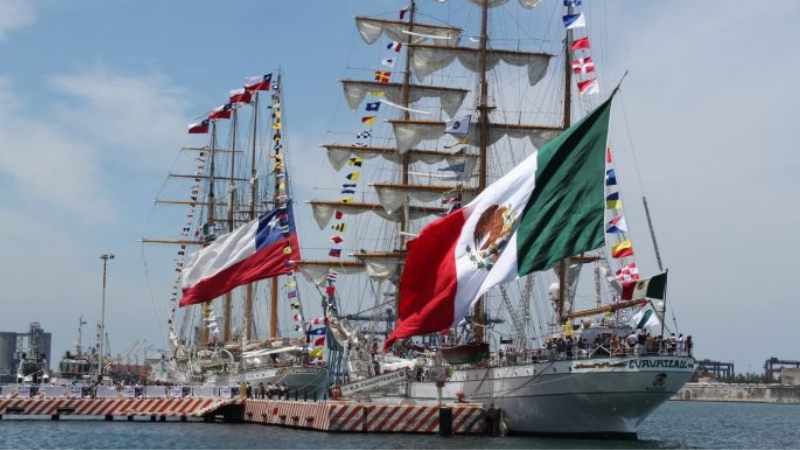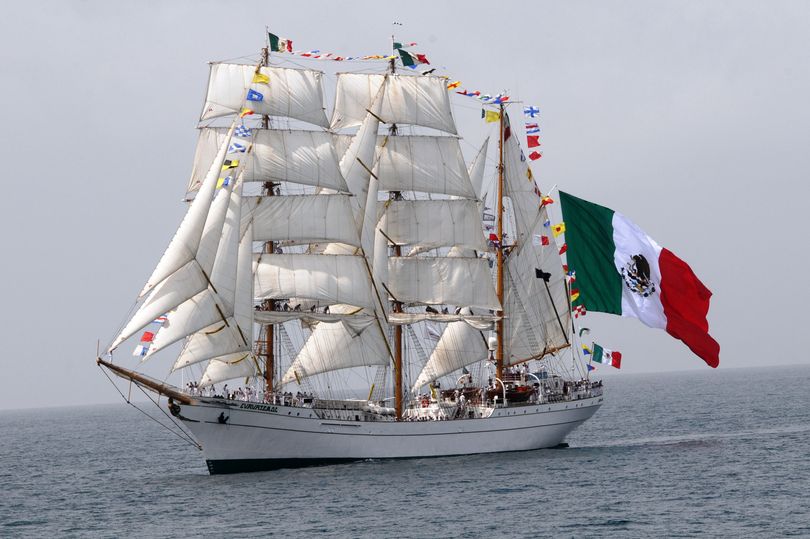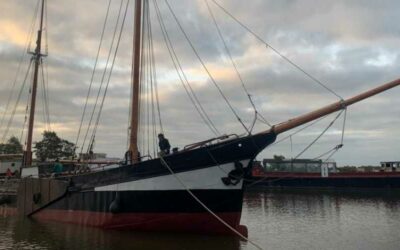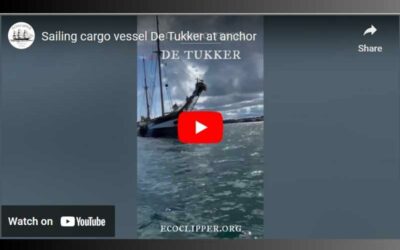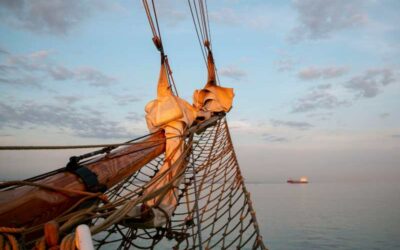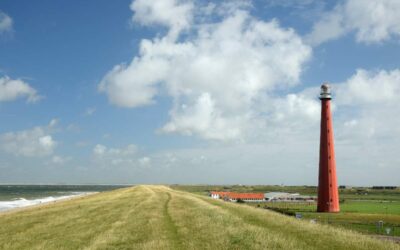Picture above: Tall Ships Veracruz
Marijose Marcos, EcoClipper communications
After having the opportunity of going back home for the holidays, (my first visit to Mexico since becoming an intern at EcoClipper) I thought it would be interesting to get to discover more about sustainable shipping, travel, and ports in my own country as it was the perfect opportunity to do so.
During my visit, I spent some days talking to my relatives about Mexican ports, sail cargo, and discussing whether sustainable shipping in Mexico could potentially be fully developed in the future since it is quite a new concept in the country.
The rise of Mexican shipping
The Aztec civilization used sailing and rowing for transporting people and goods from one coast to another, however, commercial global sailing as we know it began after Mexico was conquered by the Spanish in the sixteenth century.
Along with this came the remarkable need for an international port in the country, mainly for the export of valuable minerals, which Mexico is known for, such as gold and silver. Therefore, the first Mexican port was founded: “Puerto de Veracruz”, which in the twentieth century became established as the principal international port for Mexico along with “Puerto Manzanillo”, from which an important percentage of Mexico’s exporting goods exit the country.
Could sustainable shipping be implemented in Mexico?
Even though emission-free shipping and transport is a new developing concept in Mexico, some important coffee exporters such as “Ensambles Cafés Mexicanos” have started exporting their coffee to Germany with sail cargo vessel Avontuur, of the Timbercoast Shipping Company since 2019. The sailing-vessel “Cuauhtémoc” is one of the largest Mexican tall ships, acquired by the Mexican navy in 1981. Whilst it is currently used for naval cadet training; big exporters are looking for possible partnerships with the Naval Academy that owns the vessel to export their goods sustainably on the naval trips, mostly vehicular material.
Since vehicular material and cars are Mexico’s #1 exporting goods, the country has shown interest in exporting automobile parts with “Oceanbird”, a Swedish sustainable modern vessel developed by Wallenius Marine. This vessel would have the capacity of transporting 7,000 automobiles and crossing the Atlantic Ocean in 12 days, which would be an emission-free and efficient alternative to container ships.
It is comforting to know that even developing countries with economic struggles are aware of the actual environmental situation and are often leading to prioritize sustainable practices. It is fair to say Mexico is willing to change the way things are done, to contribute to sustainability, and to make emission-free transport and travel possible.
Big exporters in the country are becoming more and more conscious of the emissions conventional shipping methods emit and are willing to reduce them in any possible way.
When my visit came to an end, I left home feeling hopeful about environmental change and I thought to myself: “If every country contributed to developing emission-free operations and processes further, we would be on our way to change the world, our quality of life and our future.”
